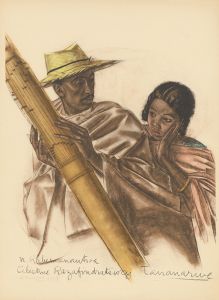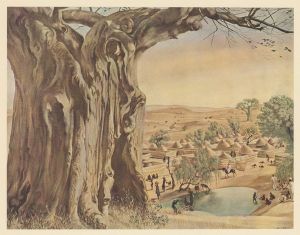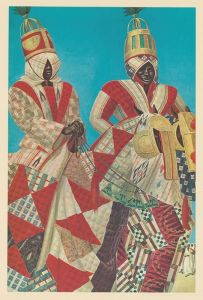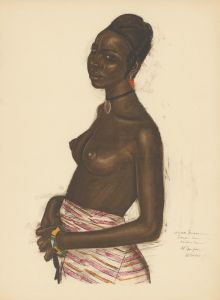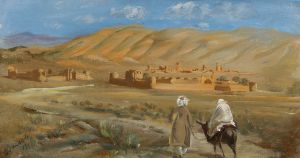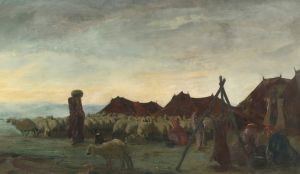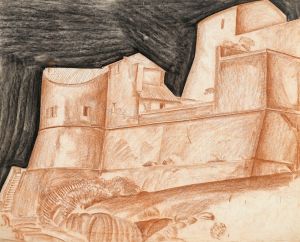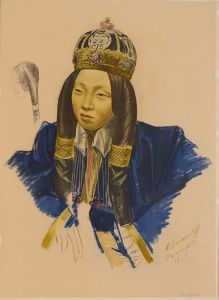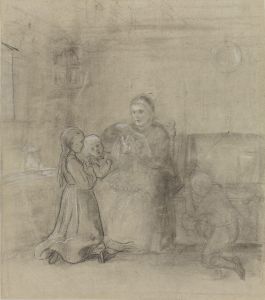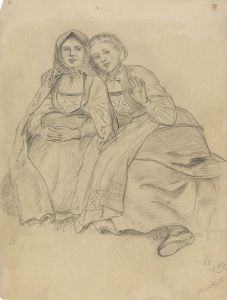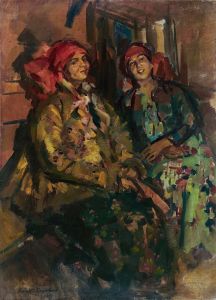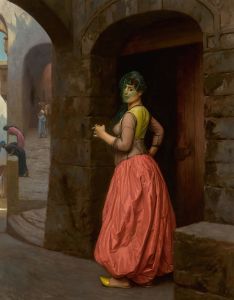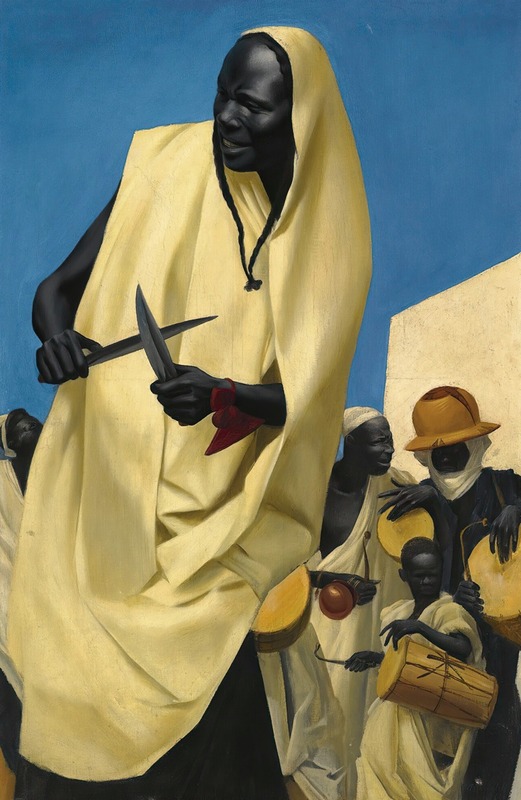
The Kuli-Kuta Dance, Niamey
A hand-painted replica of Alexandre Jacovleff’s masterpiece The Kuli-Kuta Dance, Niamey, meticulously crafted by professional artists to capture the true essence of the original. Each piece is created with museum-quality canvas and rare mineral pigments, carefully painted by experienced artists with delicate brushstrokes and rich, layered colors to perfectly recreate the texture of the original artwork. Unlike machine-printed reproductions, this hand-painted version brings the painting to life, infused with the artist’s emotions and skill in every stroke. Whether for personal collection or home decoration, it instantly elevates the artistic atmosphere of any space.
Alexandre Jacovleff's painting The Kuli-Kuta Dance, Niamey is a notable work created during the artist's participation in the Citroën-sponsored "Croisière Noire" (Black Cruise) expedition of 1924-1925. This expedition was a trans-African journey organized by the French automobile manufacturer Citroën to promote their vehicles and explore the cultural and geographical diversity of the African continent. Jacovleff, a Russian-born painter and draftsman, was invited to join the expedition as its official artist, tasked with documenting the people, landscapes, and traditions encountered along the route.
The painting depicts a traditional dance performed by the Kuli-Kuta people in Niamey, the capital of present-day Niger. Jacovleff's work is characterized by its vibrant use of color and meticulous attention to detail, capturing the energy and rhythm of the dancers as well as the cultural significance of the event. The composition reflects his interest in ethnographic subjects and his ability to convey the dynamism of movement through his brushwork. The dancers are shown in traditional attire, and the scene is set against a backdrop that suggests the arid environment of the Sahel region.
Jacovleff's artistic approach during the expedition was both documentary and interpretive. While he aimed to faithfully represent the customs and appearances of the people he encountered, his work also reflects the artistic trends of the early 20th century, including elements of Orientalism and a fascination with "exotic" cultures. His paintings and drawings from the expedition were later exhibited in Paris and other European cities, contributing to the growing interest in African art and culture among Western audiences.
The Kuli-Kuta Dance, Niamey is part of a larger body of work produced by Jacovleff during the Croisière Noire, which includes portraits, landscapes, and scenes of daily life. These works are valued not only for their artistic merit but also for their historical significance as visual records of a specific time and place. Today, Jacovleff's paintings from the expedition are held in various private and public collections, though specific details about the current location of The Kuli-Kuta Dance, Niamey are not widely documented.
Jacovleff's contributions to the Croisière Noire highlight the intersection of art, exploration, and colonialism in the early 20th century. While his works provide valuable insights into the cultures he encountered, they must also be understood within the context of the colonial attitudes and power dynamics of the period.





